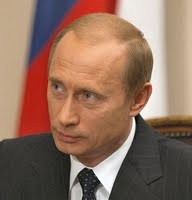How to best explain Vladimir Putin’s zigzags on Ukraine? Over the past few months, spokesmen and leading officials have confidently made statements about Russian policy only to have the Russian leader suddenly change course. It can be quite confusing for analysts and commentators to assess Russia’s true intentions—and makes Putin look dangerously unpredictable.
Putin’s long-term goals are clear: to prevent Ukraine’s full integration into the Euro-Atlantic world; to preserve some semblance of Ukraine’s former position as a neutral intermediary and buffer between Russia and the West; and to retain Russia’s special relationship with the country, particularly its southern and eastern provinces. In the short term, however, there is a much more immediate lodestone that accounts for the shifts observed in Russian policy regarding Ukraine: completing Russia’s emergence as the world’s energy superpower. In particular, this involves accomplishing two major projects: the South Stream pipeline and the opening of the Arctic.
Despite the conclusion, during Putin’s visit to Beijing, of a long-term contract for Gazprom to supply gas to China and the possibility of extending a pipeline across China to India to allow Russia to have direct access to South Asian markets, Europe remains, for the near future, Russia’s most important energy market. Nor do Chinese or Indian firms have access to the advanced technology needed to exploit more of Russia’s energy bounty. A decade ago, some analysts were predicting that Russia’s position as a major energy supplier would be undermined as massive Soviet-era fields began to run out. Moscow’s dominance in global energy markets can only be assured if the Kremlin has a way to access Russia’s future energy reserves. This means developing the ability to exploit reserves in less hospitable areas like the offshore waters of the Arctic and to tap nontraditional onshore sources. Partnerships with Western firms are absolutely essential for Russia’s state and private energy companies to survive.

